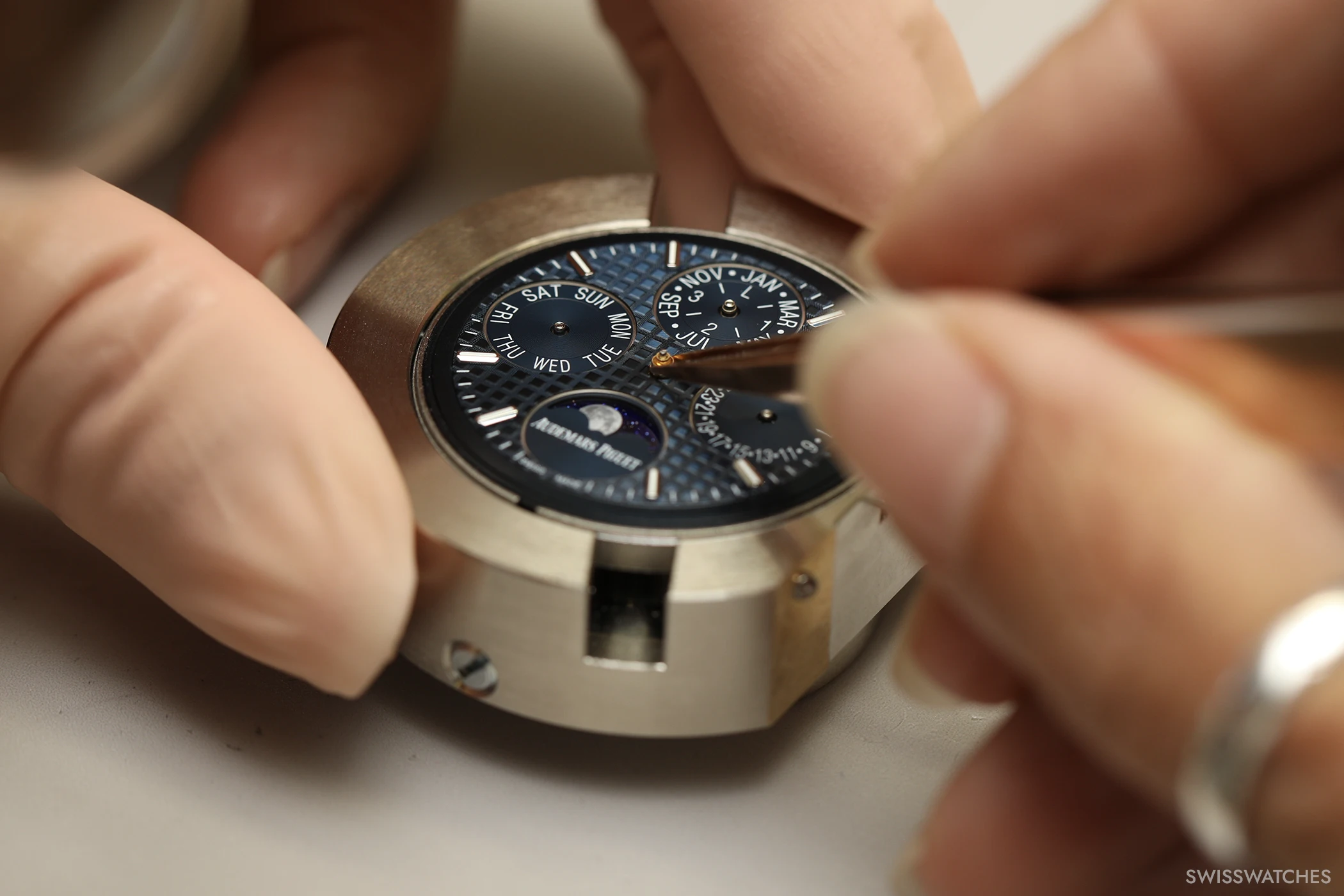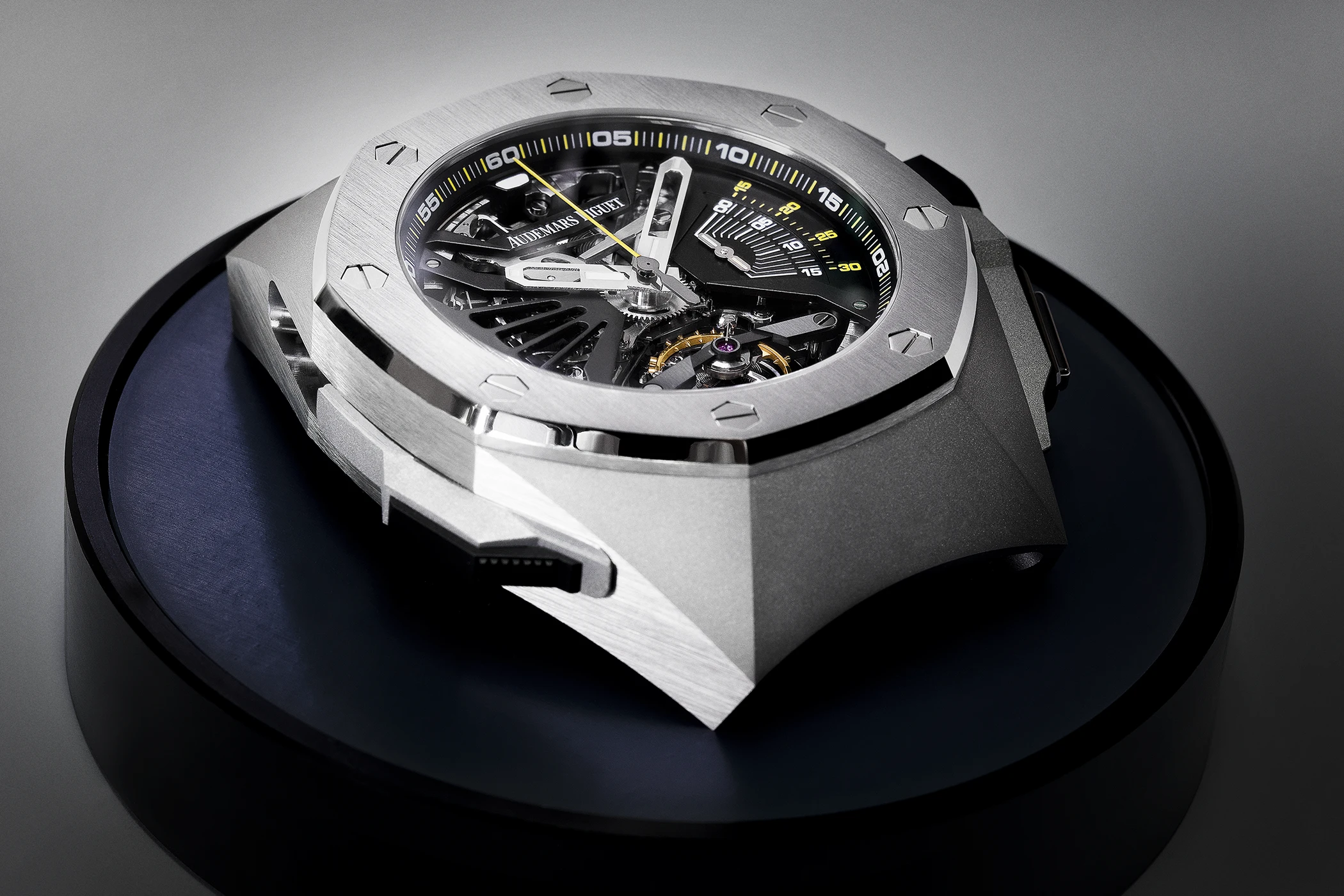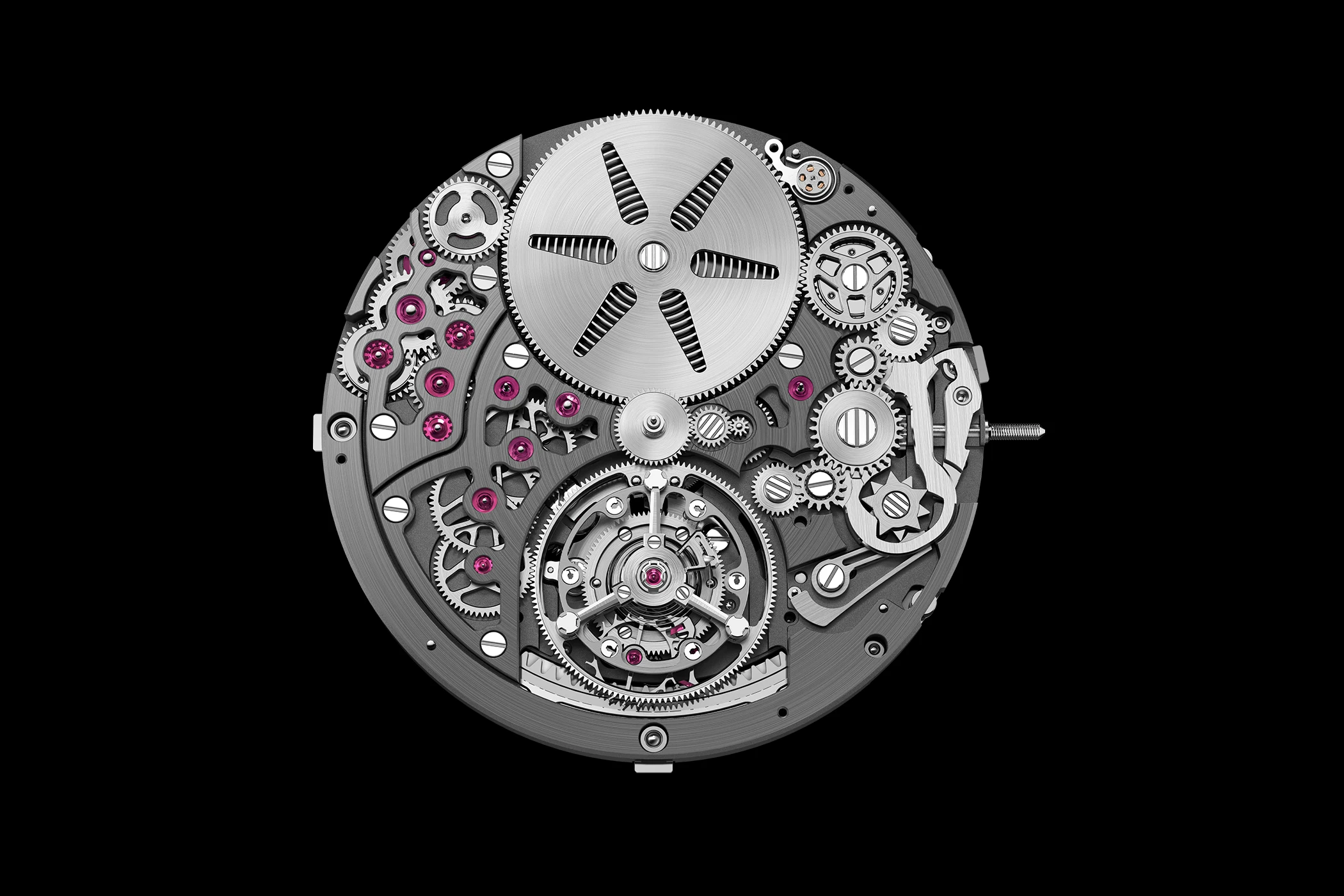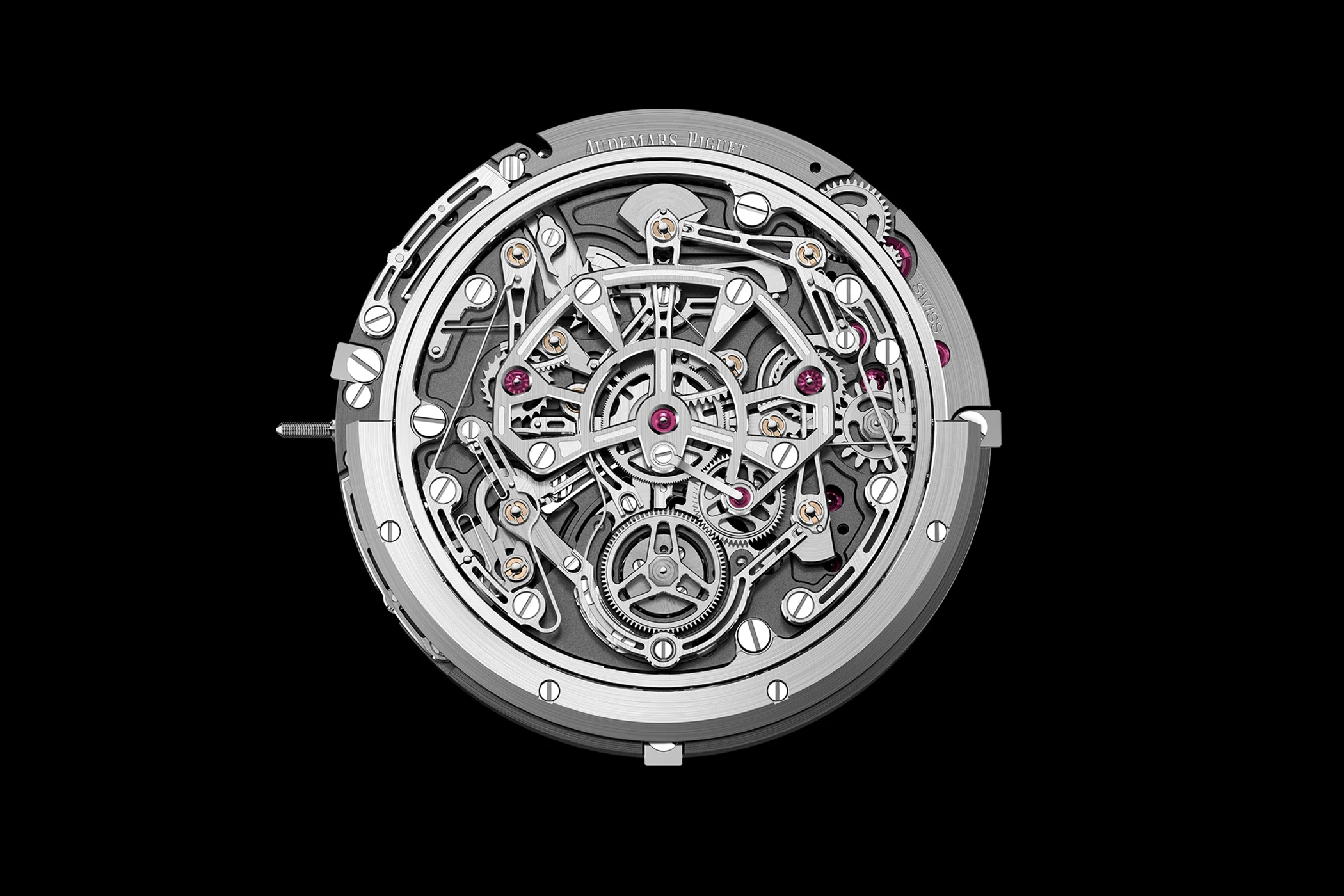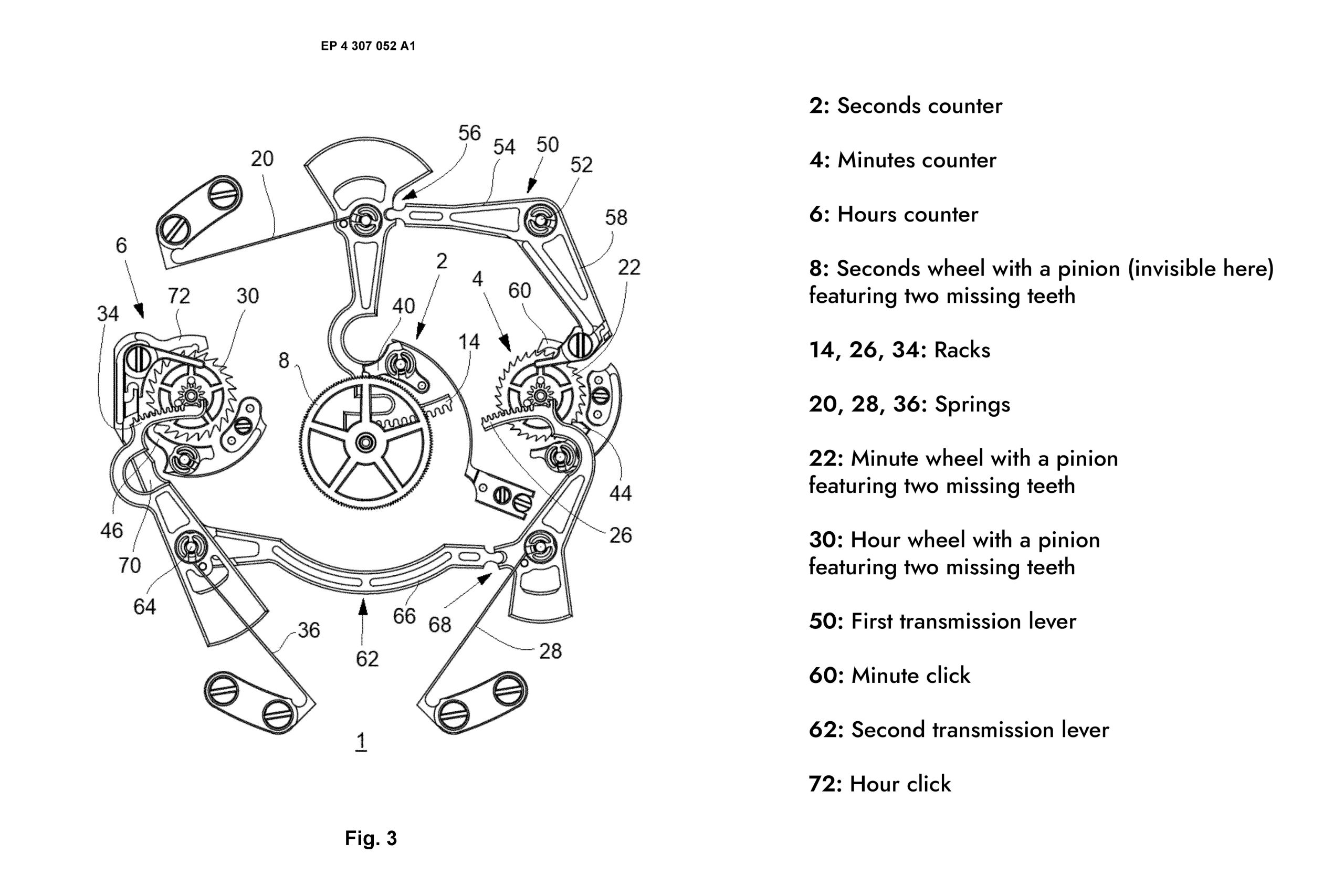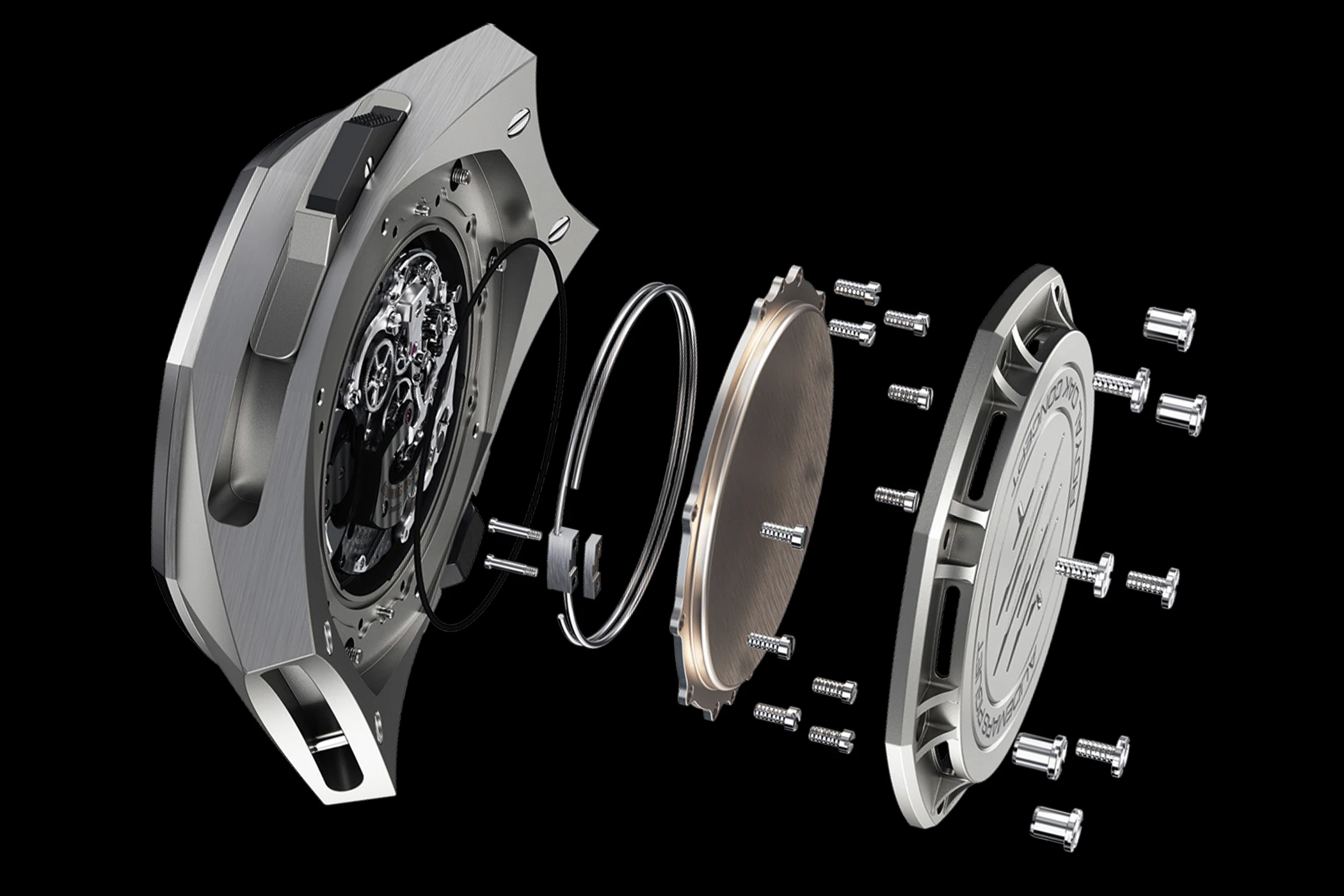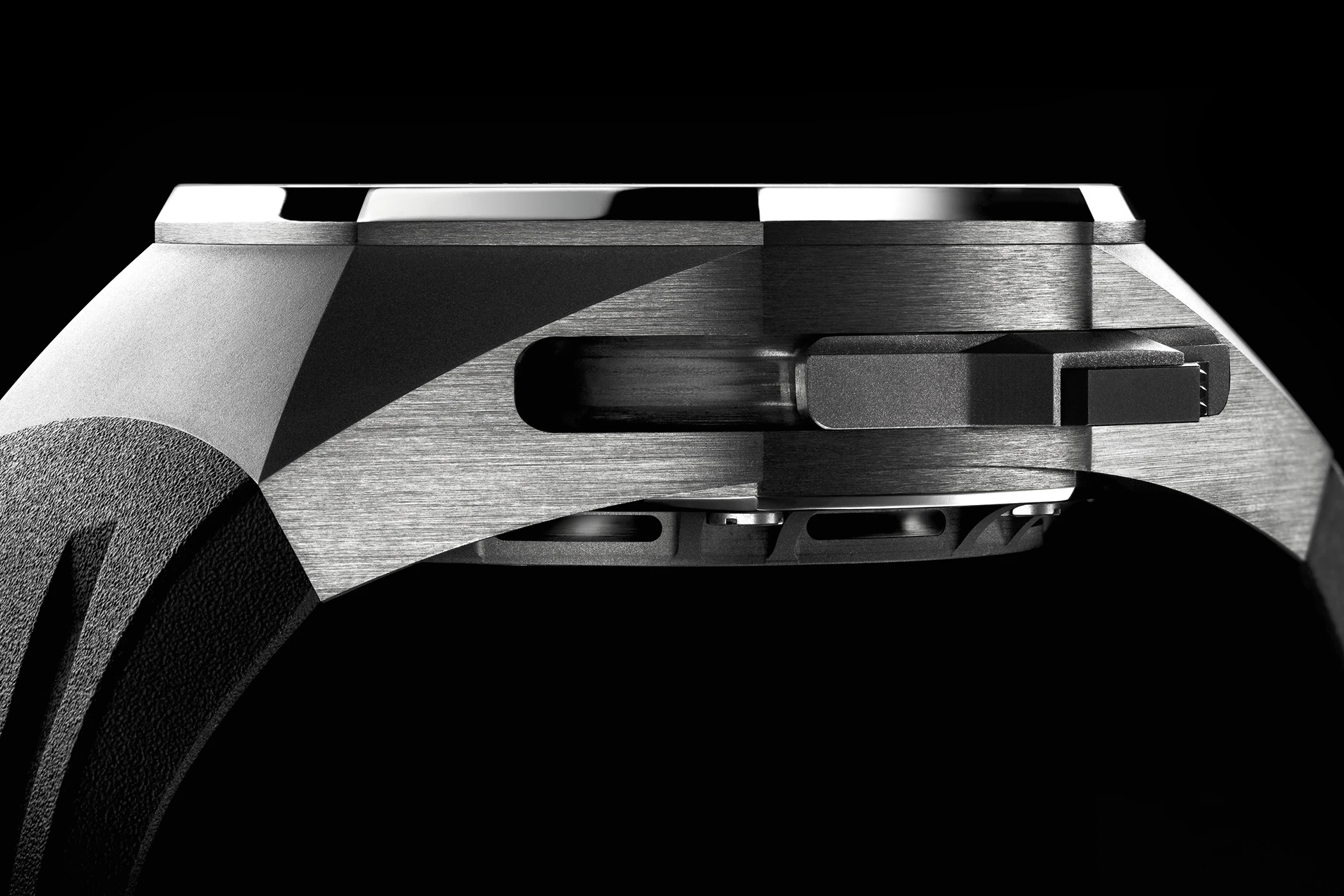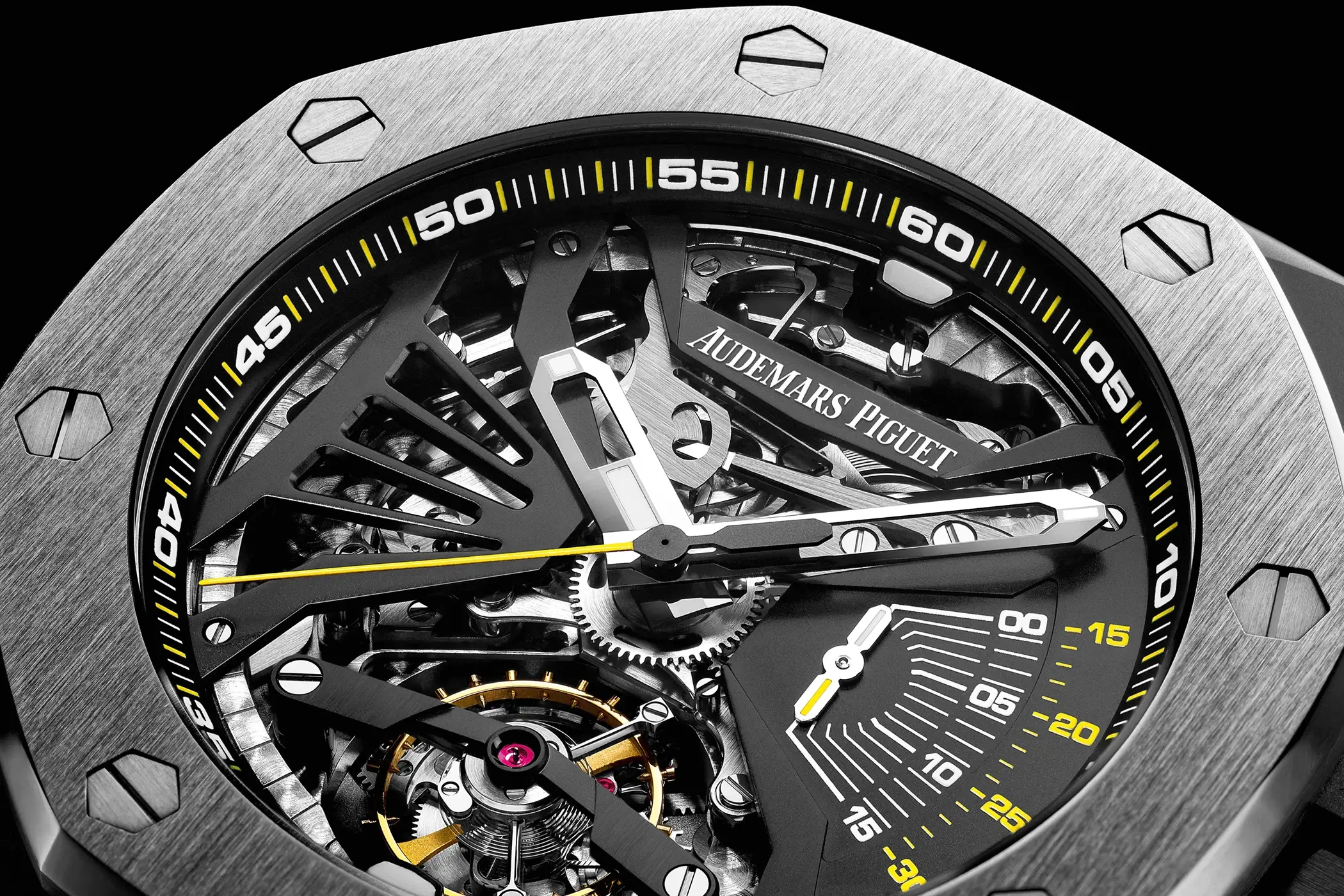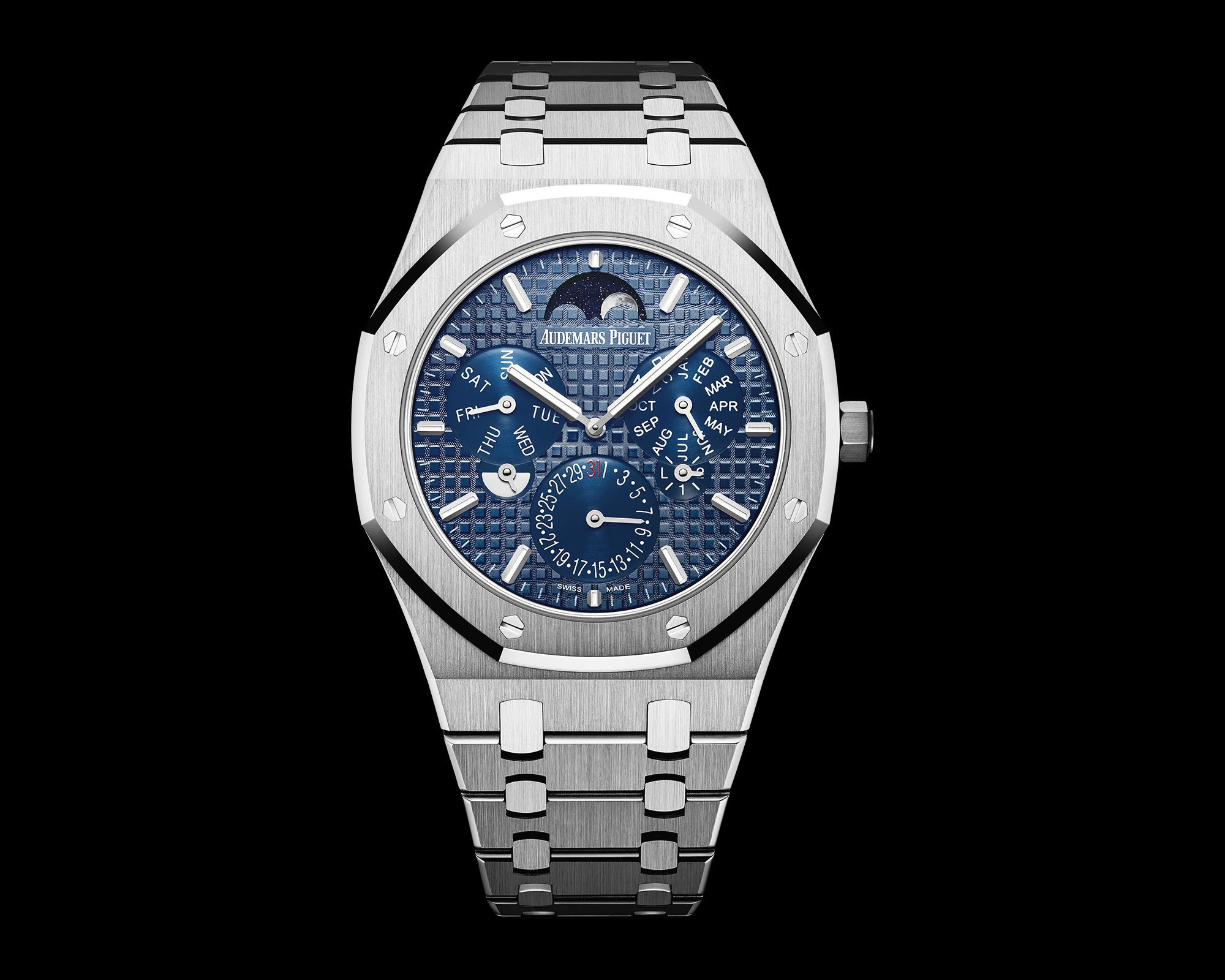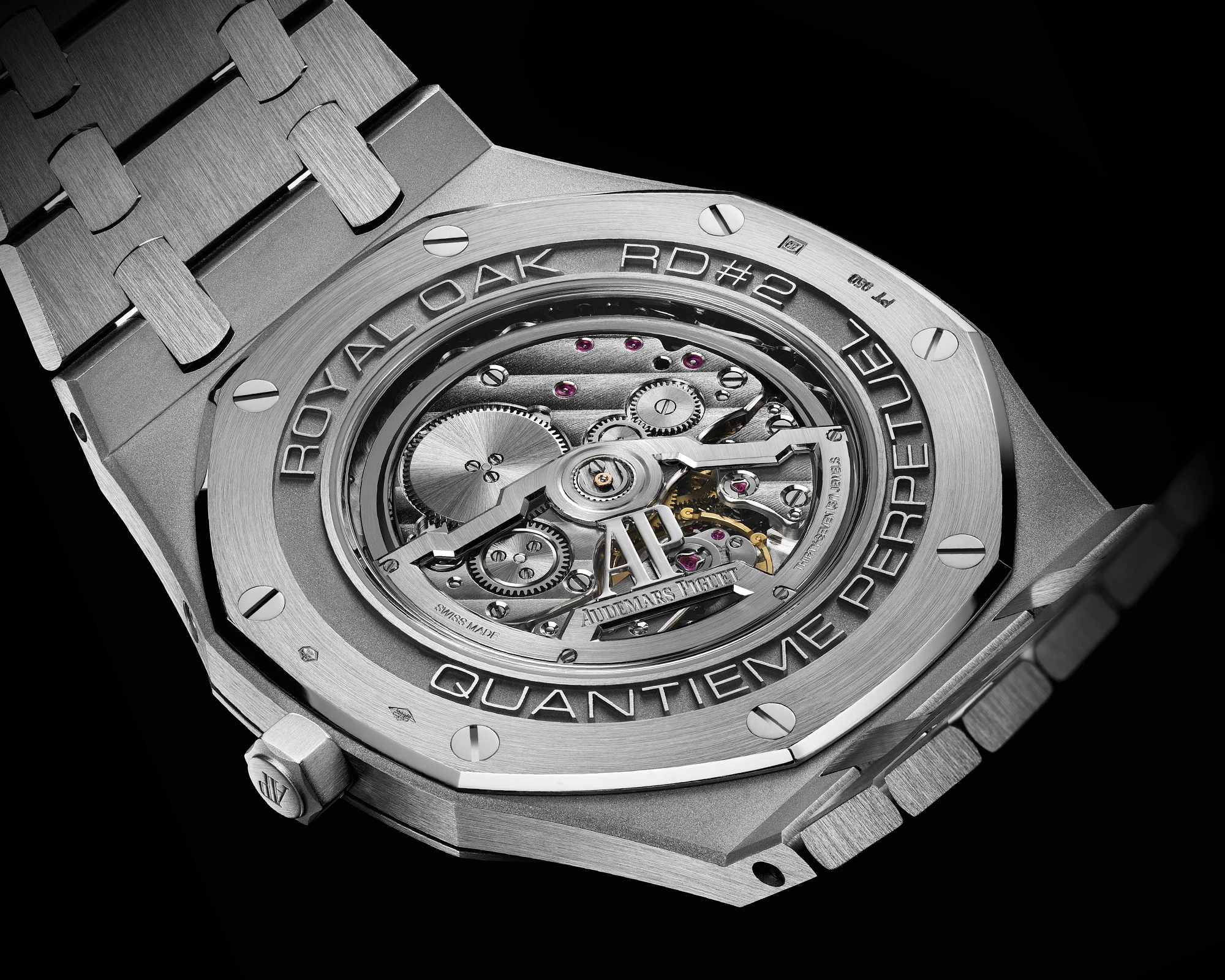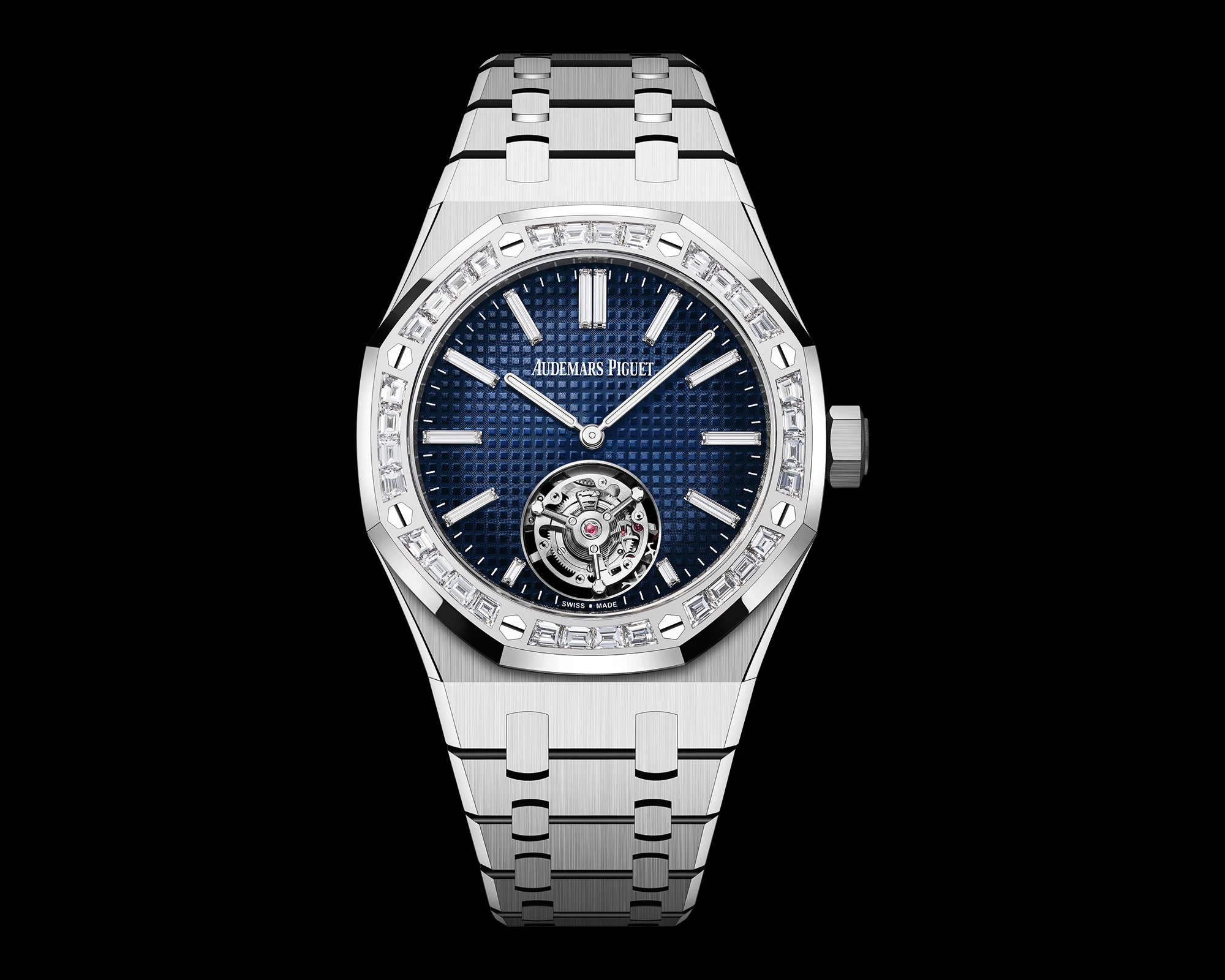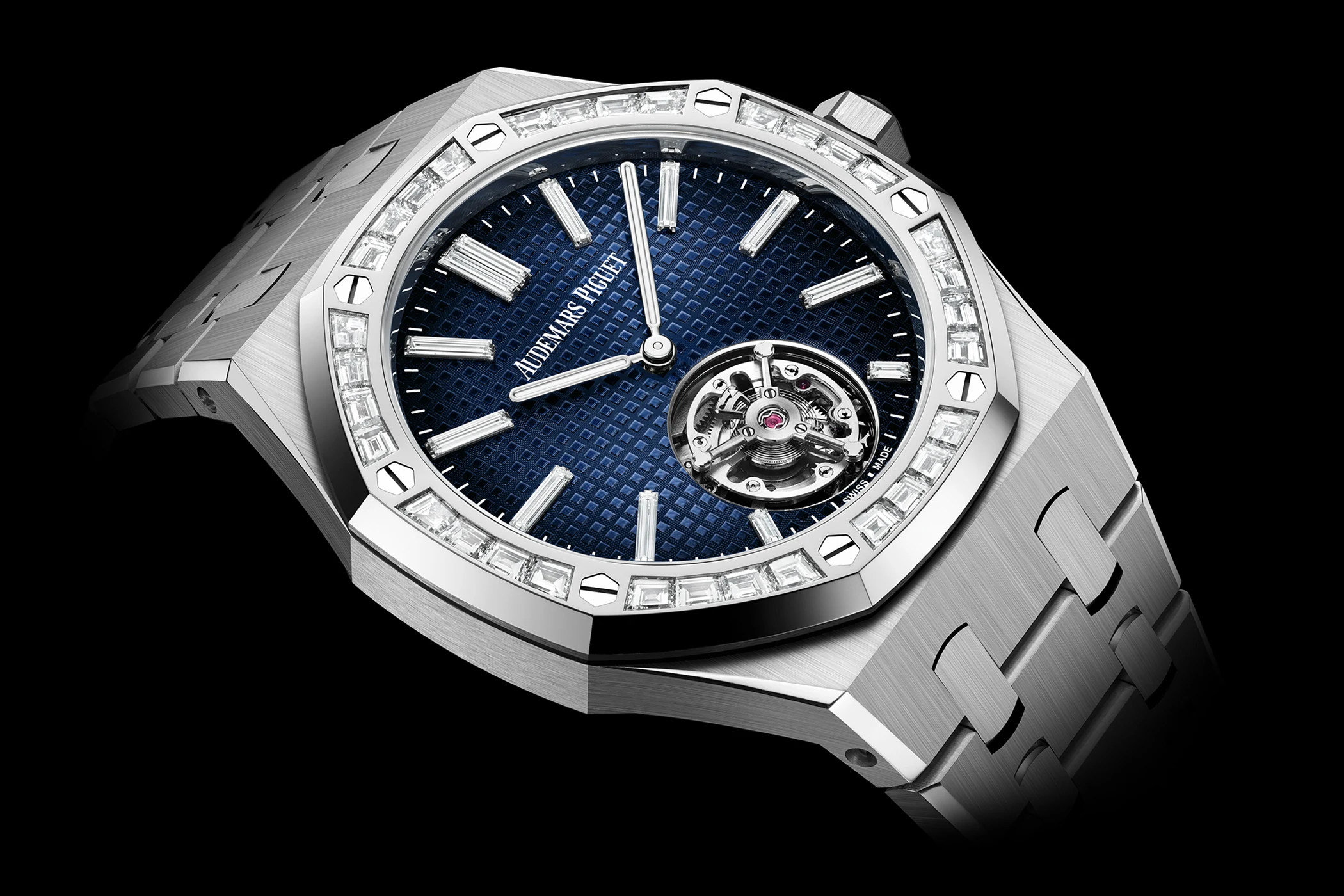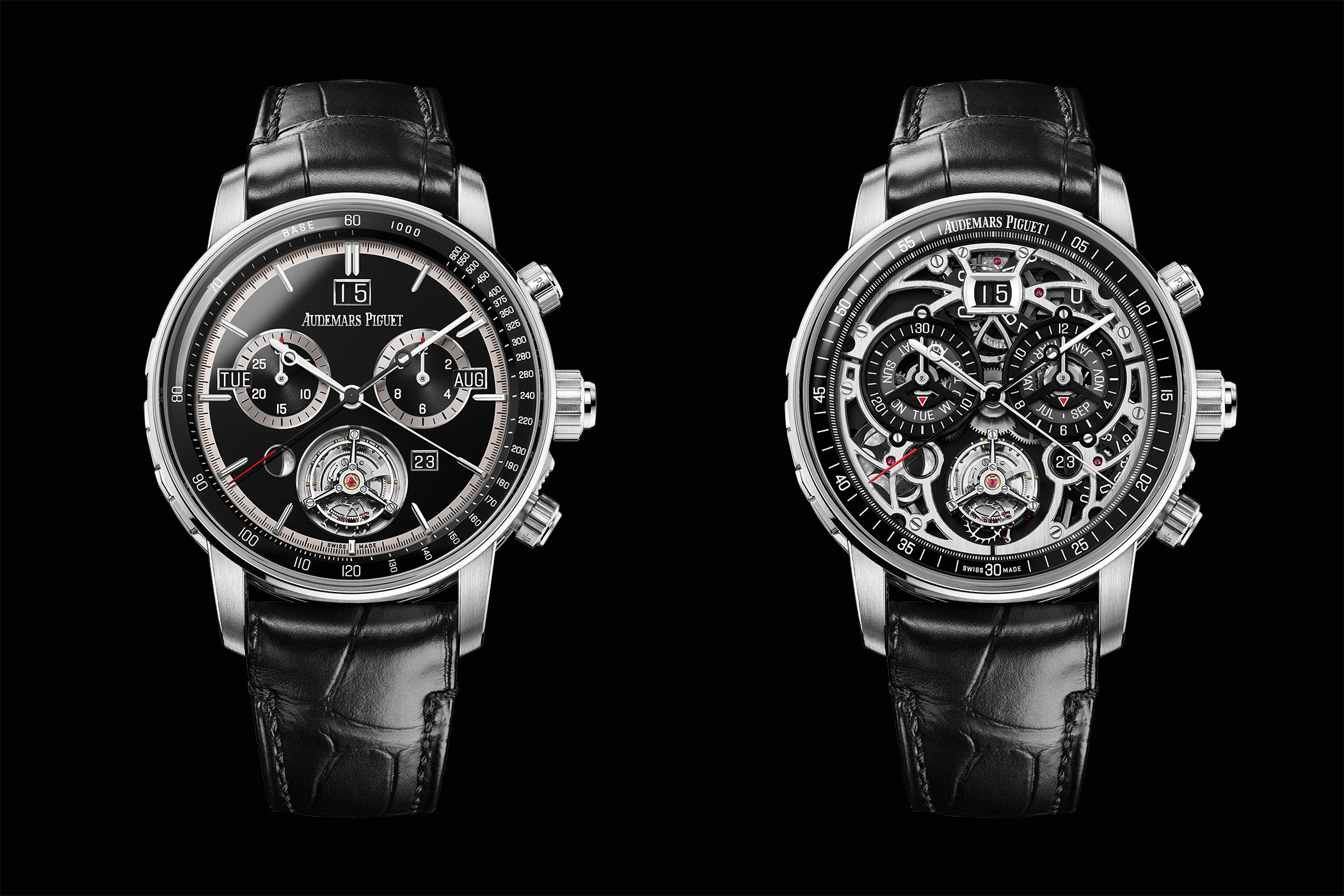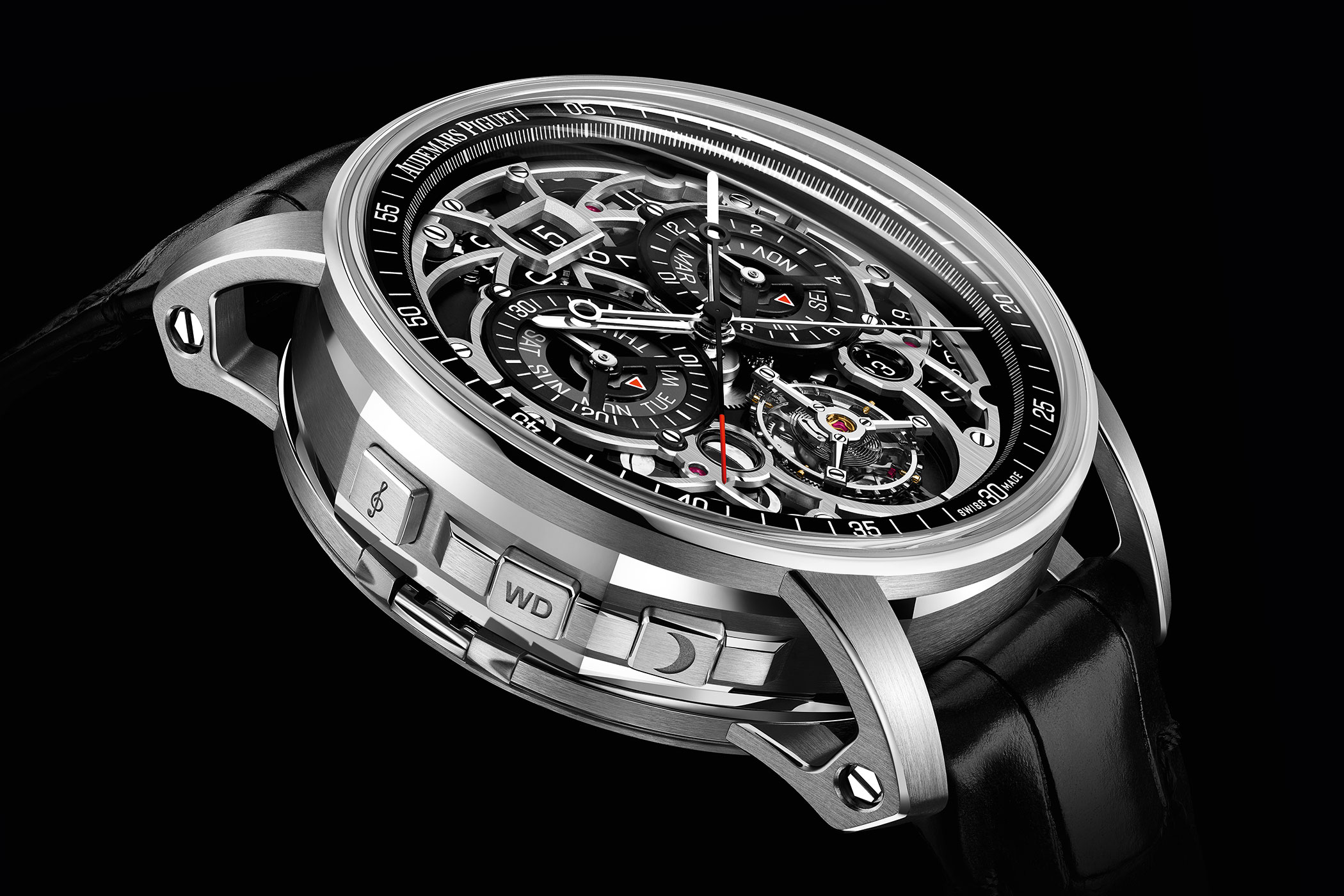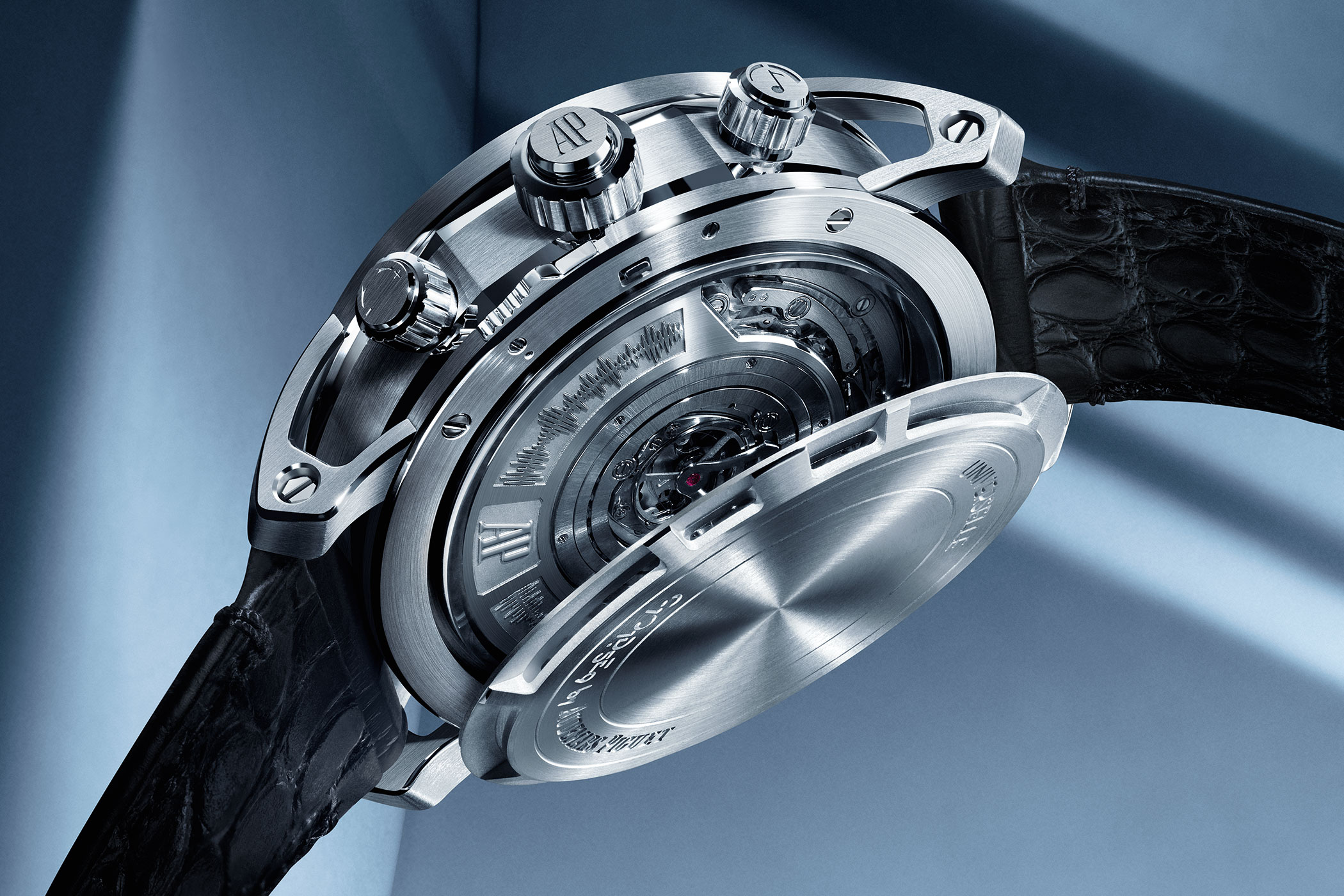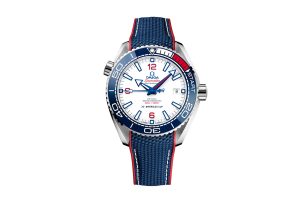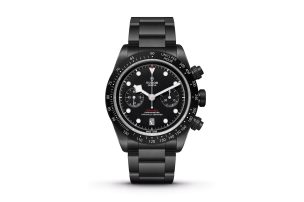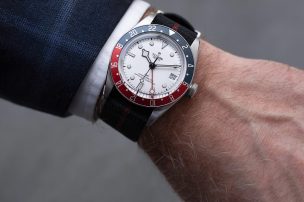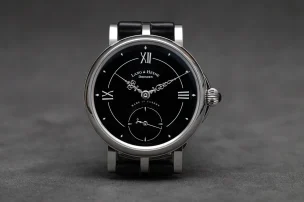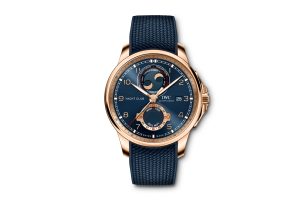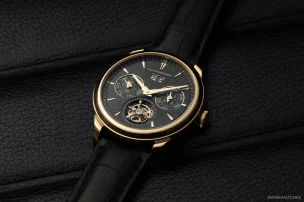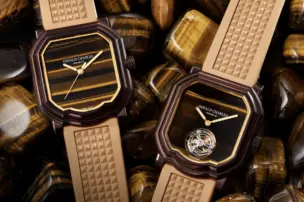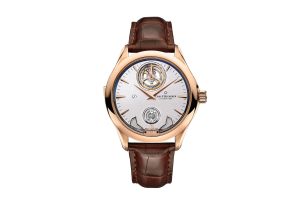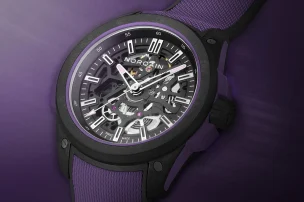

Audemars Piguet: New RD#5 Royal Oak ‘Jumbo’ Extra-Thin Selfwinding Flying Tourbillon Chronograph And The RD Programme
With the introduction of the RD#5 Royal Oak ‘Jumbo’ Extra-Thin Selfwinding Flying Tourbillon Chronograph, Audemars Piguet is redefining the chronograph. At the heart of this innovation lies a single aim: to simplify operation. Here’s everything you need to know about the new RD#5 and the evolution of the brand’s ‘Research & Development’ series.
Founded in 1875, the manufacture Audemars Piguet celebrates its 150th anniversary this year and marks the occasion with the launch of the fifth model in its groundbreaking ‘Research & Development’ programme: the RD#5 Royal Oak ‘Jumbo’ Extra-Thin Selfwinding Flying Tourbillon Chronograph. Thanks to a newly developed reset mechanism, the Maison has significantly reduced the operational forces required to engage the chronograph functions.
RD: Research and Development
This timepiece is, once again, a quintessential RD model. For over a decade, the manufacture has used its Research & Development programme to tackle some of watchmaking’s most fundamental challenges and to present pioneering solutions. The focus lies in identifying the inherent weaknesses of complications and finding optimal mechanisms to improve the user experience. Sparing neither effort nor expense, this endeavor involves questioning established norms, conducting in-depth research, collaborating with specialists beyond the world of watchmaking where necessary.
It is not about horology for art’s sake, nor innovation for innovation’s sake – it is about delivering tangible benefits to the wearer, even if achieving them requires considerable complexity and investment. The name ‘Research & Development’ is more than justified. This was already evident with the first RD model introduced in 2015: the Royal Oak Concept Supersonnerie, which elevated the sound of the minute repeater to unprecedented levels using an entirely new acoustic architecture.
But before we turn to the previous models in detail, let’s take a closer look at the new RD#5 – a watch that revolutionises the chronograph, enhances its usability, and is therefore a perfect addition to the RD lineage.
The New RD#5: The First ‘Heartless’ Chronograph
The chronograph remains the most popular and widely used grand complication. And yet, from a technical standpoint, relatively little has changed since the introduction of the vertical clutch in 1936 – despite the frequent criticism aimed at the reset pusher. In many modern chronographs, operating the pusher requires significant force, making it less comfortable to use. This decline in tactile refinement, particularly when compared with the smooth operation of pocket watches or early wristwatch chronographs, is primarily due to the water-resistant gaskets now fitted inside the pushers. Another factor is the industrialisation of production, which makes individual fine-adjustment of the pushers virtually impossible.
To better understand customer expectations and identify areas for improvement, Audemars Piguet first commissioned a comparative ergonomic study. The findings revealed that the pushers offered the greatest potential for optimisation. In most modern chronographs, the pusher must travel by at least one millimetre and requires around 1.5 kilograms of force, a level that many users find excessive. By contrast, values perceived as comfortable are more in line with those of a smartphone: around 0.3 mm of travel and just 300 grams of pressure. Audemars Piguet adopted these figures as target benchmarks for its new chronograph. Yet it quickly became clear that such performance could not be achieved through incremental refinements alone. This meant that the reset mechanism had to be completely reengineered.
Five Years of Development
The new Royal Oak ‘Jumbo’ Extra-Thin Selfwinding Flying Tourbillon Chronograph is the first model to combine an automatic chronograph and a flying tourbillon within the ultra-slim Jumbo case introduced in 1972. However, the far greater challenge lay in achieving a significant improvement in ease of operation and tactile feedback from the pushers. In total, it took five years of development before the system delivered the desired results. For the new calibre 8100, the chronograph’s reset mechanism was completely reimagined. Since Adolphe Nicole invented the zero-reset function for the seconds hand in 1844, chronographs have typically relied on a reset pusher that actuates a series of levers, which in turn interact with heart-shaped cams mounted on the central axes of the hands to bring them back to zero.
Audemars Piguet’s patented system replaces the traditional heart-shaped cam mechanism with an innovative rack-and-pinion mechanism. Instead of using the reset pusher to act directly on the hands via levers and cams, energy from the running chronograph gear train is stored in a spring-loaded rack. This keeps the gear train permanently under tension, preventing any jitter or hesitation of the chronograph seconds hand. At the same time, the system eliminates the friction spring found in most modern chronographs – a component that acts as a constant brake both during operation and at reset. The result is a similar overall energy consumption, but with energy now stored rather than lost.
The brilliance of the design lies in using the stored energy from the rack to perform the reset. When the pusher is pressed, the energy is released and the hands snap back to zero in just 0.15 seconds. To further reduce energy demand, both the chronograph hands and wheels are made from lightweight titanium. The reset motion is so fast that it becomes imperceptible to the naked eye.
The system also enables a jumping minutes counter, driven directly by the rack-and-pinion mechanism, which enhances the legibility of elapsed time. A newly optimised column wheel ensures smooth operation of the start/stop pusher as well. In addition, a second patented system collects energy during the pusher’s travel and releases it all at once when a precise point is reached, further improving the tactile quality of interaction. The chronograph’s vertical clutch has also been refined, now featuring a vertically moving coupling wheel. This innovative system combines the advantages of a traditional horizontal coupling with gear engagement and those of a vertical friction clutch. The vertical movement of the coupling wheel eliminates unwanted secondary rotations and reduces hand jump to an absolute minimum.
Audemars Piguet has also equipped the crown with an integrated function-selector pusher. When in hand-setting mode, the pusher protrudes further and reveals a red indicator ring as visual confirmation – allowing the wearer to clearly identify the crown’s current function.
Slim Architecture
The extreme demands of a slim construction further complicated the development process. The movement had to fit inside the case of the Royal Oak Jumbo, the iconic design created by Gérald Genta for Audemars Piguet in 1972. Today, that case measures just 39 millimetres in diameter and a mere 8.1 millimetres in height.
To keep the overall thickness to a minimum, both the front and caseback crystals are flat on the outside and concave on the inside, creating additional space for the hands and rotor. Further space was saved with the oscillating weight: instead of a centrally mounted rotor, Audemars Piguet chose a peripheral rotor made of platinum. This not only helped reduce the movement’s height even further, but also allows for an unobstructed view of its architecture.
Integrating a tourbillon into the ultra-thin movement posed a final challenge. The flying tourbillon, which extends up to the plane of the dial, is partly derived from the RD#3. However, its height was further reduced by rearranging certain components. The construction also allows for a wider amplitude of the balance, which helps reduce backlash and, together with the frequency of 21,600 vibrations per hour, enhances reliability, chronometric precision, and energy efficiency. Despite the limited space, the movement incorporates a mainspring barrel capable of delivering a robust 72-hour power reserve.
In total, calibre 8100 comprises 379 components. When viewed through the sapphire caseback, the movement appears every bit as contemporary as its groundbreaking design suggests: the racks used in the reset mechanism are clearly visible, while the levers and bridges are skeletonised to reveal a clean, technical aesthetic. Traditional gold-toned components have been deliberately omitted; instead, everything is finished in a modern steel-coloured tone. This is complemented by a refined striping decoration across the surfaces. The edges of the bridges and levers have been meticulously bevelled and polished by hand.
Metallic Glass
Audemars Piguet has also chosen an innovative and functional approach for the case construction, combining titanium with Bulk Metallic Glass. The latter is a new class of material that, rather than forming the usual crystalline structure of metals, takes on an amorphous, glass-like structure through rapid cooling. The result is extreme hardness and distinctive visual properties.
The brand uses its own proprietary alloy, composed of 50 percent high-value palladium. When polished, the material reveals a distinctive sheen. Audemars Piguet first employed metallic glass in 2021, in a one-off Royal Oak Jumbo Extra-Thin piece created for Only Watch. In the RD#5, the bezel, polished bracelet links, pushers and crown pusher are crafted from this advanced material. While these elements are polished, the other case and bracelet components alternate between satin-brushed and polished finishes to create a dynamic interplay of light and contrast.
The dial features the signature Petite Tapisserie pattern typical of Jumbo models, rendered in the classic ‘Bleu Nuit, Nuage 50’ tone. In celebration of the manufacture’s 150th anniversary, the typography of the brand signature draws inspiration from historical examples. The limited run of 150 pieces also references the milestone. The anniversary emblem, a stylised ‘150’, is engraved on the caseback alongside the individual number of each piece.
It is remarkable how much time and effort has gone into the development of the Royal Oak ‘Jumbo’ Extra-Thin Selfwinding Flying Tourbillon Chronograph – and how Audemars Piguet has succeeded in improving the chronograph in precisely those areas that matter most to the wearer. Its ultra-thin construction enhances wearing comfort, making the RD#5 a fitting representative of the RD programme: a series that continues to push the limits of what is technically possible in watchmaking, all while keeping the focus firmly on real-world benefits for the user. Price: €331,200 (daily rate).
RD#1: Royal Oak Concept Supersonnerie
The RD programme began in 2015 with the RD#1 Royal Oak Concept Supersonnerie – a minute repeater featuring a tourbillon and chronograph. After eight years of development in collaboration with the Swiss Federal Institute of Technology in Lausanne (EPFL) and a wide range of experts, including professional musicians, Audemars Piguet succeeded in significantly improving the sound quality of the minute repeater. The result is a tone that is louder, richer and more harmonious than that of conventional chiming watches.
This was achieved through a number of innovations, the most significant being the design of the case itself: an additional soundboard with acoustic openings acts as a resonator, amplifying the sound in much the same way as a musical instrument. Another key factor is the mounting of the gongs. Rather than being attached to the movement, they are fixed directly to the case, allowing for more effective sound transmission.
The striking regulator, which governs the tempo of the chimes and is usually audible – and often distracting – has also been improved. A complex, spring-loaded anchor now ensures that the anchor shaft no longer vibrates during operation. Even the pause that typically occurs between the hour and minute strikes when no quarter-hours are chimed has been eliminated thanks to a newly developed mechanism. Furthermore, a new manufacturing method for the gongs ensures a particularly pure tone.
In addition to acoustics, functionality, and safety were also enhanced. In most repeaters, setting the time while the striking mechanism is engaged can cause damage. In the Supersonnerie, however, a blocking mechanism prevents the crown from being pulled out during chiming.
RD#2: Royal Oak Selfwinding Ultra-Thin Perpetual Calendar
When it was unveiled in 2018, the RD#2 was the world’s thinnest selfwinding wristwatch with a perpetual calendar. The case measures just 6.3 millimetres in height.
To achieve this, Audemars Piguet once again introduced several patented innovations. The end-of-month cam was integrated into the date wheel, while the month cam was combined with the month wheel. From the outset, the geometry of each individual component was optimised to reduce both adjustment and assembly time. All functions of the perpetual calendar lie on a single plane. To enhance legibility, the designers also avoided the common practice of assigning multiple indications to a single subdial – something that is often seen in perpetual calendar displays.
RD#3: Royal Oak Selfwinding Flying Tourbillon Extra-Thin
With the RD#3, introduced in 2019, Audemars Piguet for the first time combined a flying tourbillon and a selfwinding movement within the 8.1-millimetre-thin Jumbo case. The watch is powered by the manufacture’s ultra-thin calibre 2968, which measures just 3.4 millimetres in height.
The tourbillon features a peripheral drive and a newly developed escapement. Together with the lightweight titanium tourbillon cage, this allowed the mechanism to be made significantly more energy-efficient, which in turn enabled a reduction in the size of the mainspring barrel.
The groundbreaking RD#3 also underscores the technical achievement of the new RD#5: it manages to integrate, in the same case, not only a flying tourbillon and self-winding system, but also an innovative chronograph.
RD#4: Code 11.59 Ultra Complication Universelle
In 2023 and after seven years of development, Audemars Piguet unveiled the most complicated watch the manufacture has ever created with the RD#4. It offers 40 functions, 23 of which are classified as complications. The range of featured complications includes a grande and petite sonnerie, minute repeater, flying tourbillon, perpetual calendar, astronomical moon, moon phases, flyback and split-seconds chronograph, and a large date. The newly developed automatic manufacture calibre 1000 comprises 1,140 components.
Yet this wouldn’t be a true RD model if it weren’t also designed for intuitive operation and comfortable wear. Despite its complexity, the RD#4 remains surprisingly wearable at 42 millimetres in diameter and just 15.55 millimetres thick – made possible through a host of miniaturisation techniques within the movement. All pushers are clearly labelled, making it easier to operate the watch’s wide array of functions.
Remarkably, despite the relatively slim profile, the highly resonant soundboard system from the RD#1 Supersonnerie has also been integrated. In this case, however, it has been reengineered to allow a view of the movement’s reverse side: the resonating plate, to which the gongs are attached, is made from sapphire crystal, while the soundboard cover with acoustic openings takes the form of a hinged gold caseback.
